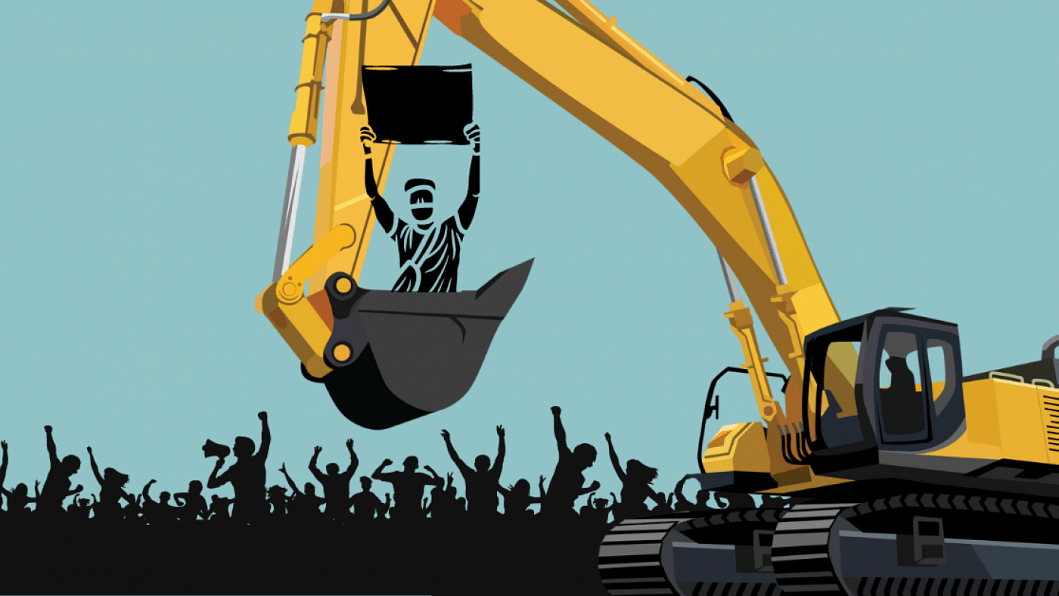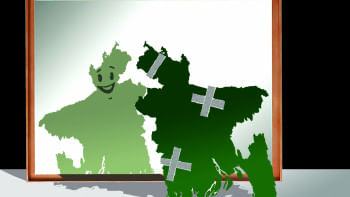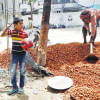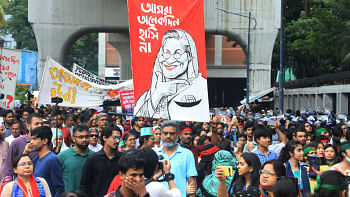Who will defend our public property defenders?

Over the last few weeks, journalists and activists have been subjected to an amplified scale of threats, intimidation, and incarceration at the hands of powerful groups who are allegedly in cahoots with members of the administration. The incidents reveal the campaigners' gaping vulnerability to the elements flexing muscle to establish their illegal private control over public property.
On December 25, a group of six to seven men confronted Abul Azad, a reporter covering environment and politics for a national English daily, when he was taking photos of brick kilns that were allegedly operating illegally in Chattogram's Rangunia upazila. Azad was forced into a vehicle at gunpoint and taken to a local government office, where he was subjected to further assault. Before releasing him, the perpetrators robbed him. His medical records indicate that he suffered a fracture in the neck and endured pain in his chest, abdomen, and hands.
In his testimony to the Committee to Protect Journalists (CPJ), Azad stated that one of the attackers was a member of Islampur Union Parishad. He said his captors deactivated the office's security cameras, beat him with their hands and pistols and kicked him repeatedly, and confiscated his mobile phone, wallet and identification card. They contacted the UP chairman over phone, who threatened Azad saying "nothing will happen if journalists like you are killed" and ordered the men to beat him further and destroy his phone. The men seized Tk 10,000 in cash from Azad, withdrew all the money from his Bkash account and demanded an additional sum of Tk 50,000 as ransom that Azad refused to pay. The CPJ affirms that both the member and the chairman of the UP that assaulted Azad are members of the ruling party.
Two weeks ago, journalist Raghunath Kha endured an even more chilling experience. On January 23, plain-clothed police officers detained Kha after he reported on a land dispute in Khalishakhali area of Satkhira in southwest Bangladesh. Kha was arrested along with two others on the alleged charge of being associated with an attempted bomb blast in coordination with the landless people of the area. The authorities initially denied taking Kha into custody.
The alleged custodial torture inflicted on Kha was evident as he was unable to stand properly when he was produced before the court. Kha told the magistrate that he had been subjected to severe beating and electrocution and had been threatened to be killed if he continued reporting on the landless people. Sources claim that police failed to provide the copy of the first information report showing specific allegations against the accused.
On January 26, leading environmental activist Syeda Rizwana Hasan and her associates were barred from visiting a spring that has allegedly been filled up by razing hills in the Lake City residential area of Chattogram. The group of youths who stopped her was allegedly led by Zahurul Islam alias Jashim, counsellor of Uttar Pahartali ward under the Chattogram City Corporation. Brandishing lethal weapons, the attackers allegedly hurled stones at her vehicle, commandeered it to a destination of their choice, and blocked the visitors until police freed them later.

The experiences of Azad, Kha, and Hasan provide a glimpse into the hard reality that public property defenders face in today's Bangladesh. All three were engaged on issues of major public concern: air pollution and control over public land and hills. All three were engaged in collecting evidence on the scale of destruction of public property, and all three were motivated to draw the attention of state agencies and the public to the nefarious activities of individuals and groups to establish their control over such property for private gains. If anything, they were simply armed with their pens, paper, and phones, and most importantly, their passion for and commitment to defending public property.
The narrative above raises several important points. First, all three cases were of flagrant usurpation of public property. This suggests that the wrongdoers had the confidence of getting away with their acts. In all likelihood, their connection with the power structure gave them such a sense of immunity. Second, in all three instances, the use and threat of use of lethal weapons were evident. This reflected that, nowadays, rights defenders are at serious risk. Third, they also run the risk of being subjected to abduction, unlawful detention, and incarceration, and often government offices become places of such detention. Fourth, the perpetrators do not hesitate to inflict grievous bodily harm (such as electrocution in Kha's case) on their victims. Sixth, the extent of the perpetrators' transgression includes robbing the victims of their valuables or commandeering their vehicles. And finally, in both the Rangunia and Chattogram city cases, the enmeshing of local government representatives' interests with criminal activities is palpable.
More worrisome is Kha's experience of alleged custodial torture, police's framing of an allegedly fictitious case against him (of planting a bomb), and the agency's failure to produce the FIR. The authorities' initial denial that Kha was in their custody and their failure to produce him before the magistrate within 24 hours, as stipulated under the law, appear to be in violation of the country's Code of Criminal Procedure. The failure of the deputy inspector general of police in Khulna division to act on an earlier written complaint from Kha against Satkhira superintendent of police's (SP) repeated threats towards him (Kha) also raises questions.
The experiences of Azad, Kha, and Hasan provide a glimpse into the hard reality that public property defenders face in today's Bangladesh. All three were engaged on issues of major public concern: air pollution and control over public land and hills. All three were engaged in collecting evidence on the scale of destruction of public property, and all three were motivated to draw the attention of state agencies and the public to the nefarious activities of individuals and groups to establish their control over such property for private gains.
The government's propensity to suppress environmental activism became obvious when demonstrators against a large coal-fired power plant in Rampal near the Sundarbans were branded as "terrorists." In May 2021, Shahnewaz Chowdhury had to endure 80 days of incarceration under the much contested Digital Security Act (DSA) for a Facebook post. In that post, he had expressed concern about another coal-fired power plant project in Chattogram's Banshkhali, in southeast Bangladesh, calling on the youth to "resist injustice" against the "environmentally destructive" project. Now, Chowdhury faces up to 10 years in prison if found guilty.
At least 12 workers and locals, who were against the Banshkhali project, have been killed over the last seven years by police fire. The situation stooped to a new low when a member of the parliamentary standing committee on forest and environment insisted that the OC of Keshabpur police station in Jashore implicate a local environment activist in a staged bomb attack on the police station. The audio recording of the conversation went viral (Samakal, January 31, 2021).
Rights activists have expressed concerns about government agencies taking initiatives to officially criminalise environmental defenders. In Apr0il 2022, the visiting UN special rapporteur on human rights and climate change called for an end to "the harassment and threats and intimidation against climate change human rights defenders and Indigenous peoples."
There is an urgent need for our policymakers and senior state functionaries to acknowledge that public property defenders play a crucial role in keeping groups with vested interests at bay. That role has become more pronounced at a time when preserving the environment and the commons holds high priority in the government's development agenda. Therefore, it is incumbent on the authorities to institute credible and proper investigation into all cases of appropriation of public property and hold the perpetrators to account. They must identify and take appropriate action against the kingpins that remain in the shadows, and take visible and concrete actions so that encroachers of land, hills, rivers, and other waterbodies can be effectively deterred.
The author acknowledges the insights secured from Barrister Jyotirmoy Barua.
Dr CR Abrar is an academic with interest in human rights issues.

 For all latest news, follow The Daily Star's Google News channel.
For all latest news, follow The Daily Star's Google News channel. 










Comments